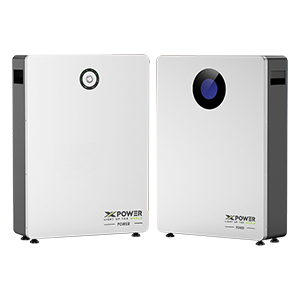Understanding Residential Energy Storage: What It Is and How It Works
Time of Release : 2024-10-23
About the Author:
Welcome! I am honored to introduce our brand -- Xpower, the author behind this friendly guide to solar cell technologies. With over 15 years of experience in the solar photovoltaic (PV) industry, Xpower bring a wealth of knowledge and expertise to the table.
Xpower as a manufacturer and exporter in the field of solar energy, through years of hands-on experience, we have witnessed the evolution of solar cell technologies and the transformative impact they have had on the renewable energy landscape.

As the world increasingly shifts toward renewable energy sources, residential energy storage has emerged as a crucial technology for homeowners. This article explores what residential energy storage is, how it operates, and its benefits.
What Is Residential Energy Storage?
Residential energy storage refers to systems that store energy for later use in a home setting. These systems typically utilize batteries to capture energy generated from renewable sources, such as solar panels or wind turbines, or to store energy during off-peak hours when electricity rates are lower. This stored energy can then be used during peak hours or outages, providing homeowners with greater control over their energy consumption.

Key Components of Residential Energy Storage Systems
- Batteries: The most common component of residential energy storage systems. Lithium-ion batteries are prevalent due to their efficiency, longevity, and decreasing costs.
- Inverter: Converts direct current (DC) electricity from the batteries into alternating current (AC) electricity that can be used by household appliances.
- Charge Controller: Manages the flow of energy between the solar panels (if applicable), batteries, and home’s electrical system, ensuring optimal charging and discharging.
- Energy Management System: A software tool that monitors and optimizes energy usage, allowing homeowners to manage when and how energy is used or stored.
How Does Residential Energy Storage Work?
The functioning of residential energy storage systems can be broken down into several key steps:
- Energy Generation: If the home is equipped with solar panels, they generate electricity during sunlight hours. This energy can be used immediately or stored for later use.
- Energy Storage: Excess energy produced by the solar panels or purchased during off-peak hours is sent to the battery storage system.
- Energy Discharge: During periods of high demand or when the solar panels are not generating enough energy (e.g., at night), the stored energy is released from the batteries to power the home.
- Grid Interaction: Many residential energy storage systems can also interact with the electrical grid. Homeowners may sell excess stored energy back to the grid during peak demand, potentially earning money or receiving credits on their utility bills.
Benefits of Residential Energy Storage
- Poupança de custos: Storing energy during off-peak hours can reduce electricity bills by allowing homeowners to use less expensive energy when prices rise.
- Independência Energética: Homeowners can rely more on their own energy generation and storage, reducing dependence on the grid and increasing resilience against outages.
- Environmental Impact: By enabling greater use of renewable energy, residential energy storage contributes to reduced reliance on fossil fuels, helping to mitigate climate change.
- Load Shifting: With energy storage, homeowners can shift their energy use to times when it’s cheaper or more abundant, optimizing their overall energy consumption.
- Backup Power: In case of power failures, energy storage systems provide a reliable backup source of electricity, keeping critical appliances running.
Conclusão
Residential energy storage systems represent a significant advancement in energy management for homeowners. By harnessing the power of battery technology, these systems enhance energy efficiency, promote renewable energy use, and provide economic benefits. As technology continues to evolve and become more accessible, residential energy storage is poised to play an essential role in creating a sustainable energy future.




